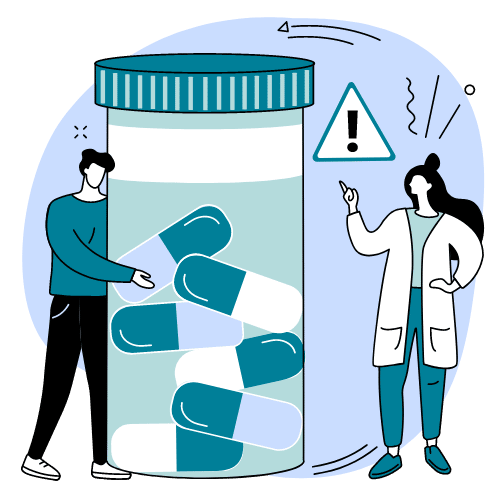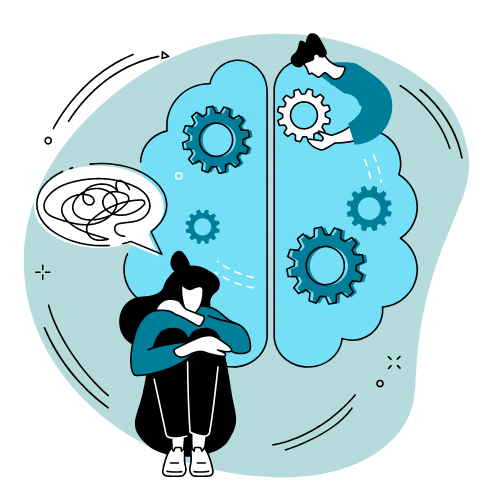Cravings represent one of the most challenging aspects of early recovery. These intense urges to use substances can feel overwhelming and may trigger thoughts that recovery isn’t possible. However, with the right techniques and understanding, cravings become manageable challenges rather than insurmountable obstacles.
At Swift River, we emphasize that cravings are a normal part of the recovery process—not a sign of failure or weakness. More importantly, we teach practical strategies that help our clients navigate these difficult moments successfully.
Understanding the Science of Cravings
Before discussing management techniques, it helps to understand what happens in your brain and body during cravings.
The Neurological Basis of Cravings
Substance use creates powerful neural pathways in the brain’s reward system. When you repeatedly use substances, your brain’s reward circuit adapts by:
- Releasing large amounts of dopamine, the “feel-good” neurotransmitter
- Creating associations between substances and relief or pleasure
- Developing environmental triggers that activate cravings
- Reducing natural dopamine production, making normal pleasures less satisfying
In recovery, your brain needs time to rewire these pathways. During this adjustment period, cravings serve as your brain’s attempt to return to what it perceives as “normal” functioning.
The Physical Experience
Cravings typically involve both psychological urges and physical sensations, which may include:
- Increased heart rate and blood pressure
- Sweating or chills
- Muscle tension
- Stomach discomfort
- Difficulty concentrating
- Feeling anxious or irritable
Understanding these responses helps normalize the experience and reminds you that cravings are temporary physical states—not commands you must obey.
The Craving Cycle
Most cravings follow a predictable pattern:
- Trigger (environmental cue, emotion, memory)
- Thought (“I need a drink/drug”)
- Physical response (bodily sensations)
- Emotional response (anxiety, desire)
- Behavior (seeking substances or using coping skills)
Cravings typically peak within 15-30 minutes before naturally subsiding. This knowledge alone can provide comfort during intense moments.
Immediate Physical Techniques for Managing Cravings
When cravings hit, these physical strategies help regulate your nervous system and interrupt the craving cycle.
Deep Breathing: Your Portable Calm Button
Controlled breathing directly counteracts the stress response that often accompanies cravings:
- Try “box breathing”: Inhale for 4 counts, hold for 4, exhale for 4, hold for 4
- Practice “4-7-8 breathing”: Inhale for 4 counts, hold for 7, exhale for 8
- Use “power breathing”: Take 10 quick, deep breaths followed by a long exhale
Even 30 seconds of intentional breathing can significantly reduce craving intensity.
Urge Surfing: Riding the Wave
This mindfulness technique involves observing cravings without acting on them:
- Acknowledge the craving without judgment
- Focus attention on the physical sensations in your body
- Describe these sensations to yourself in detail
- Notice how the sensations change, peak, and eventually diminish
Urge surfing helps create distance between feeling a craving and acting on it.
Physical Activity: Changing Your State
Movement effectively disrupts cravings by:
- Releasing endorphins that improve mood
- Redirecting focus away from cravings
- Burning excess energy that might fuel impulsivity
- Changing your physical environment
Activities can be as simple as 10 jumping jacks, a brisk walk around the block, or stretching exercises. The key is immediate action.
Hydration and Healthy Alternatives
Sometimes the body confuses thirst with cravings. Try:
- Drinking a large glass of cold water
- Sipping herbal tea
- Snacking on something crunchy or flavorful
- Using sugar-free gum or mints to address oral fixation
These simple physical interventions can reduce craving intensity while addressing underlying physiological needs.
Mental Strategies to Redirect Thinking
Complementing physical techniques with mental strategies creates a comprehensive approach to craving management.
Distraction Techniques: Shifting Focus
Effective distractions engage your mind fully:
- Call a supportive friend or recovery sponsor
- Complete a crossword puzzle or word search
- Count backward from 100 by 7s
- Listen to music that doesn’t trigger memories of substance use
- Engage in a hobby that requires concentration
The goal isn’t avoiding feelings permanently but creating space to implement other coping skills.
Playing the Tape Forward: Seeing the Complete Picture
This cognitive technique involves mentally following the craving to its logical conclusion:
- Acknowledge the immediate relief substances might provide
- Visualize what happens hours later
- Consider the next day’s consequences
- Imagine the impact on your recovery goals
- Remember previous experiences following substance use
This exercise helps counteract the brain’s tendency to focus only on immediate rewards.
Mindfulness: Creating Space Between Urge and Action
Mindfulness practices effective for craving management include:
- The RAIN technique (Recognize the craving, Allow it to exist, Investigate without judgment, Non-identification—seeing the craving as separate from yourself)
- Body scan meditation focusing on areas where you feel the craving
- Grounding exercises using your five senses (identify 5 things you see, 4 things you can touch, 3 things you hear, 2 things you smell, 1 thing you taste)
These approaches build the crucial skill of observing urges without automatically responding to them.
How Swift River Teaches Craving Management
At Swift River, we recognize that managing cravings effectively requires both education and practice. Our approach includes:
Personalized Craving Response Plans
Each client works with their treatment team to develop an individualized plan that:
- Identifies personal triggers
- Lists effective techniques based on personal preference
- Creates a tiered response system for different craving intensities
- Incorporates contact information for support people
- Includes motivational reminders of recovery goals
These plans provide a concrete roadmap during challenging moments when thinking clearly becomes difficult.
Experiential Learning and Practice
We believe in practical application of craving management techniques:
- Role-playing responses to high-risk situations
- Guided practice sessions for key techniques
- Group feedback and support for strategy development
- Graduated exposure to triggers in a supported environment
Through repeated practice, effective responses become more automatic over time.
Integration with Overall Recovery Plan
Craving management connects with other aspects of treatment:
- Addressing underlying mental health issues that may trigger cravings
- Building overall stress management skills
- Developing healthy reward systems to replace substance use
- Creating lifestyle changes that reduce exposure to triggers
Our beautiful Berkshire Mountains setting provides an ideal environment for learning these skills away from daily triggers before applying them in home environments.
Building Your Craving Management Toolkit
Effective craving management involves preparation, practice and persistence. Remember:
- Different strategies work for different people
- What works for one type of craving may not work for another
- Early recovery typically involves more frequent and intense cravings
- Skills improve with practice
- Seeking help during intense cravings demonstrates strength, not weakness
By consistently applying these techniques, many people find that cravings gradually become less frequent and less intense over time. Even more importantly, they develop confidence in their ability to withstand urges without acting on them.
At Swift River, we help our clients transform their relationship with cravings from overwhelming experiences to manageable parts of the recovery journey. Through understanding, preparation and practice, cravings become opportunities to strengthen recovery muscles rather than threats to sobriety.
Ready to learn effective strategies for managing cravings and building a sustainable recovery? Call Swift River at 413-570-9698 to speak with our admissions team about our comprehensive addiction treatment programs.













